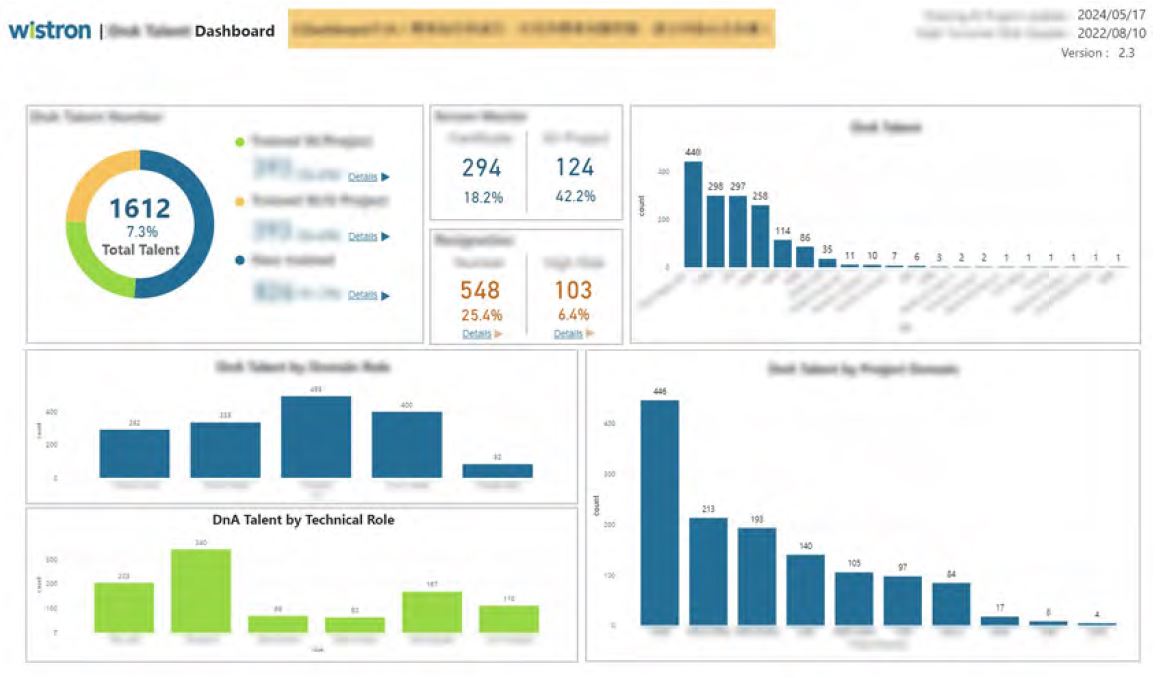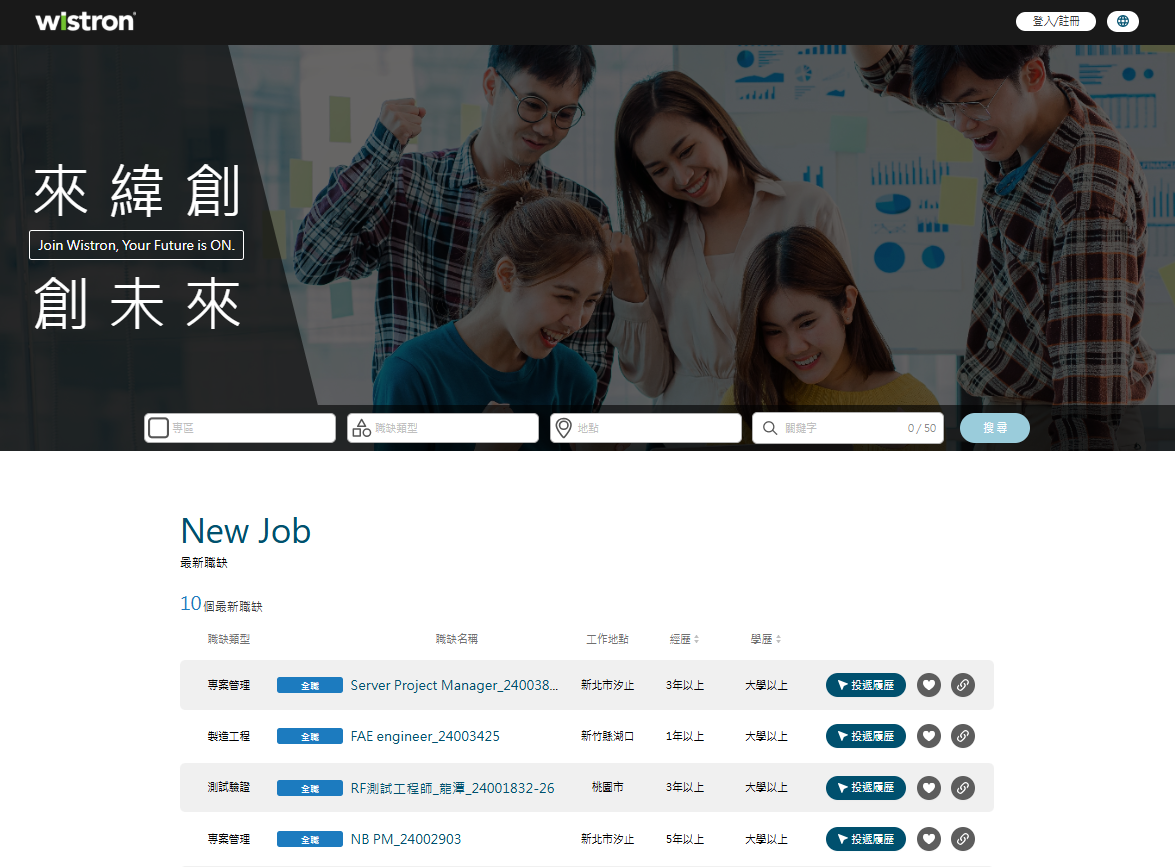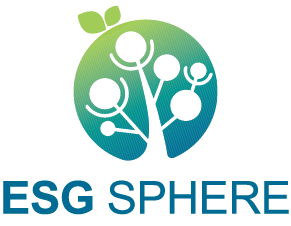HR Technologies
Wistron initiated its digital transformation journey in 2014 and has been cultivating digital talents systematically and applying digital technologies across various business domains. HR technologies refer to the utilization of digital tools to better automate talent acquisition, utilization, development, and retention. Data analysis and AI technology can help the HR department better understand the company's human capital, predict and analyze data, which can help the HR department better manage decision insights and trends and thus identify the company's risks and opportunities more effectively. In the future, Wistron will focus on building a comprehensive talent development and skill management system. By tracking employee skills, planning employee individual development, integrating and recommending courses, the company can better identify employees with great potential, develop excellent leaders,
and continue to drive employee growth with the help of data analysis and machine learning.
Data Visualization

Process Automation
Wistron leverages modern visualization tools (such as Power BI), combined with automated data integration and aggregation, to transform key HR metrics into intuitive and easily understandable dashboards, providing real-time data
insights and decision support for managers and the human
resources team.
insights and decision support for managers and the human
resources team.
Wistron conducts process re-engineering for periodic and repetitive manual tasks and implements Robotic Process Automation (RPA) technology to unify and standardize similar workflows, significantly reducing the time spent on repetitive manual operations and enhancing internal HR operational efficiency.
Digitalized Recruitment
Wistron has established a one-stop recruitment system by streamlining and integrating complex workflows across multiple systems. Officially launched in Taiwan at the end of 2022, this system not only consolidates internal and external talent pools but also enables HR supervisors to effectively monitor the entire recruitment process, reducing candidate selection time by approximately 41%. Wistron continues to optimize the system and has rolled out the system to our Vietnam plant in 2024. Starting in 2025, we plan to gradually adopt the system across other overseas locations, paving the way for the completion of a fully digitalized global recruitment blueprint.
- Since its launch in November 2022, the system has accumulated over 272,000 uses, with 30,287 candidates completing registration and 22,401 comprehensive resumes collected.
- User satisfaction among Wistron management reached 8.19 (out of 10), while candidate satisfaction was rated at 9.72 (out of 10)

Application of Generative AI
Wistron has integrated Generative AI (Gen AI) technology into recruitment processes. Beyond streamlining the creation of job descriptions through AI-assisted job requisition forms, the technology was further applied in February 2024 to enhance recruitment interviews. By analyzing candidate resumes and aptitude test results, Gen AI generates customized interview question banks, helping interviewers formulate more comprehensive questions, significantly improving interview efficiency.
Global HR Data Audit Systematization
To achieve global data compliance and strengthen corporate governance, Wistron has developed a standardized, globally applicable HR data audit system with the goal of achieving “real-time global data compliance.“ This system has integrated existing data validation tools while standardizing validation processes and logic. It covers data reconciliation across all HR operations, and is equipped with an anomaly alert mechanism. This ensures that both headquarters and sites can maintain data accuracy, promptly identify anomalies, and efficiently report, clarify, and track resolution progress. By enabling effective communication and automating management tools, the system provides real-time visibility into global audit results and trends, improving management efficiency and reducing operational risks.







